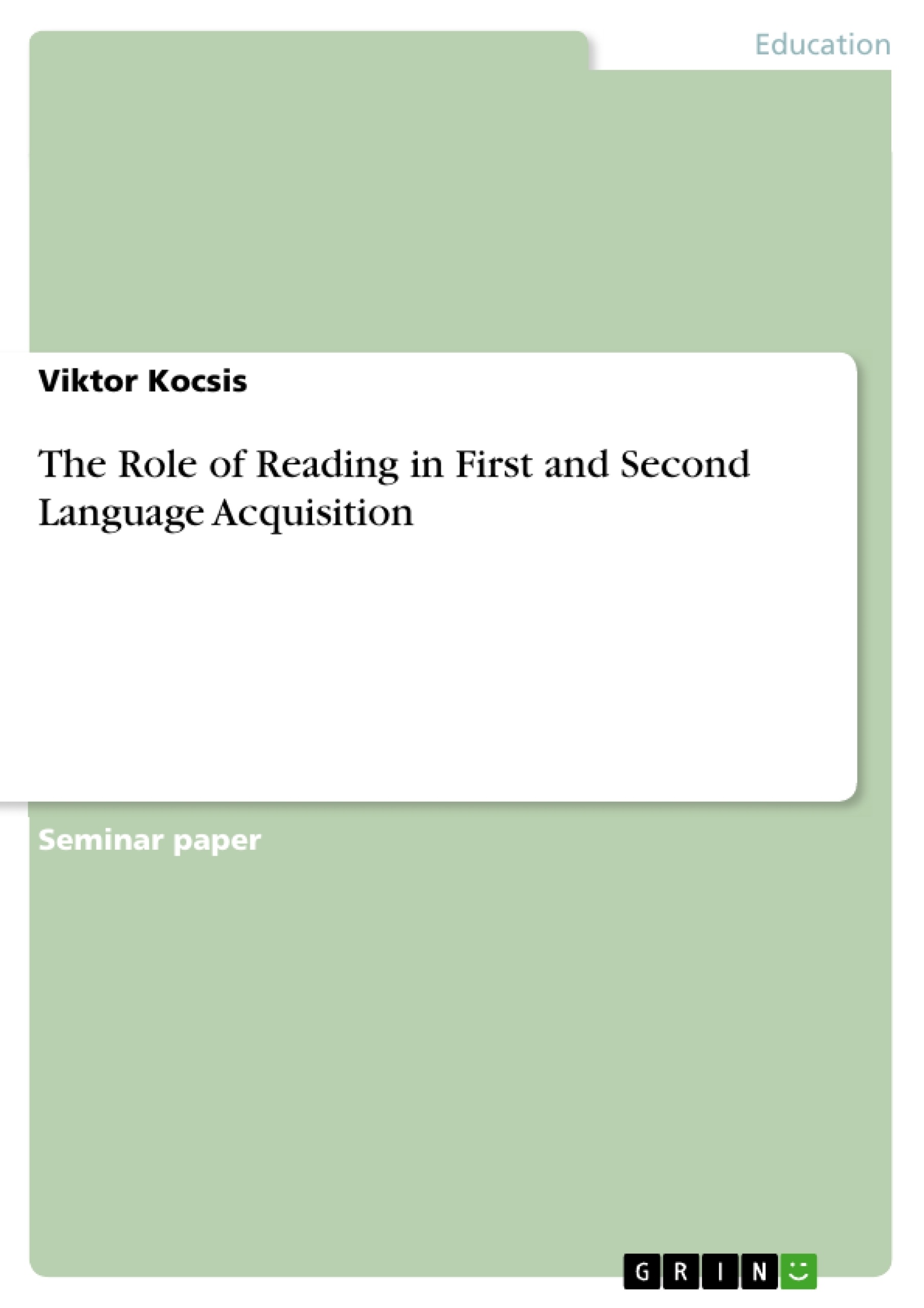“A person’s future opportunities for success and prosperity will be even more entwined with skilled reading abilities. It is therefore an important societal responsibility to offer every person the opportunity to become a skilled reader, and in many cases, this means becoming a skilled L2 reader.” (GRABE 2009: 6)
As GRABE reveals with his statement, reading has become an indispensable language skill not only in an individual’s mother tongue, but preferably also in its acquired foreign language, without which it is difficult, if not impossible to make career nowadays. Wherever we go outside our homes, we will see and read print, even so in more deprived areas, such as on hiking trails, where instead of advertising wallpapers we are likely to encounter signposts that guide us. Since information transfer is reserved to both oral and written communication in modern society, reading remains the only option to decode writing.
However, developing reading skills is more than just improving one’s word recognition and decoding abilities. GRABE points out that “most words build phonological activation prior to lexical access” (2009: 24) in the word recognition process that combines the interactive areas of orthography, phonology and meaning. This characteristic of reading allows for unconscious pronunciation drilling and training even though it can be assumed that readers will occasionally consciously check the pronunciation of certain unfamiliar words. Whether or not supported by conscious learning, reading seemingly prepares learners for oral communication by maintaining constant phonological activation.
Moreover, recognized words in the reading process are supposed to transmit some activation energy to their “semantic neighbours in the lexical network when they are accessed.” (GRABE 2009: 25/26) Known as the notion of spreading activation (GRABE 2009: 25), this phenomenon suggests that reading establishes a cognitive network of connotations that learners acquire to broaden their lexis for idiomatic application in communicative contexts.
As one may quickly realize, reading involves learning about both language and content, which is why it simply must be part of a regular English lesson. Therefore, the research question addressed in this paper is what English language teachers should keep in mind when developing reading tasks for both First (L1) and Second Language Learners (L2).
Table of Contents
1. Introduction
2. The Nature of Language and Literacy
3. First Language Acquisition.
3.1 Characteristics of First Language Acquisition
3.2 Models of L1 Development Stages
3.3 Ideal Texts and Reading Tasks for L1 learners
4. Second Language Acquisition.
4.1 Characteristics of Second Language Acquisition
4.2 Reading Models for L2
4.3 Ideal Texts and Reading Tasks for L2 learners
5. Conclusion
6. Bibliography
- Arbeit zitieren
- Viktor Kocsis (Autor:in), 2012, The Role of Reading in First and Second Language Acquisition, München, GRIN Verlag, https://www.grin.com/document/230308
-

-

-

-
Laden Sie Ihre eigenen Arbeiten hoch! Geld verdienen und iPhone X gewinnen. -

-
Laden Sie Ihre eigenen Arbeiten hoch! Geld verdienen und iPhone X gewinnen. -

-
Laden Sie Ihre eigenen Arbeiten hoch! Geld verdienen und iPhone X gewinnen. -

-
Laden Sie Ihre eigenen Arbeiten hoch! Geld verdienen und iPhone X gewinnen. -

-
Laden Sie Ihre eigenen Arbeiten hoch! Geld verdienen und iPhone X gewinnen. -

-
Laden Sie Ihre eigenen Arbeiten hoch! Geld verdienen und iPhone X gewinnen. -

-
Laden Sie Ihre eigenen Arbeiten hoch! Geld verdienen und iPhone X gewinnen. -

-
Laden Sie Ihre eigenen Arbeiten hoch! Geld verdienen und iPhone X gewinnen. -

-
Laden Sie Ihre eigenen Arbeiten hoch! Geld verdienen und iPhone X gewinnen. -

-
Laden Sie Ihre eigenen Arbeiten hoch! Geld verdienen und iPhone X gewinnen.

